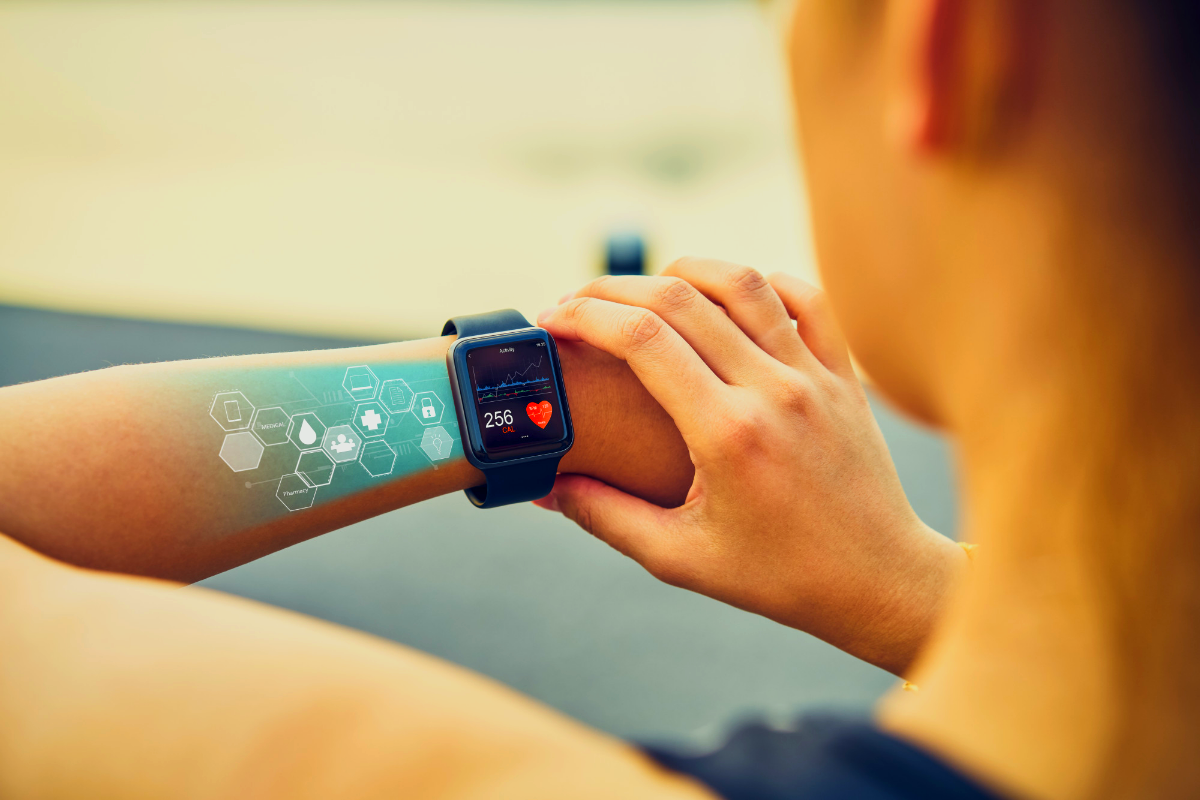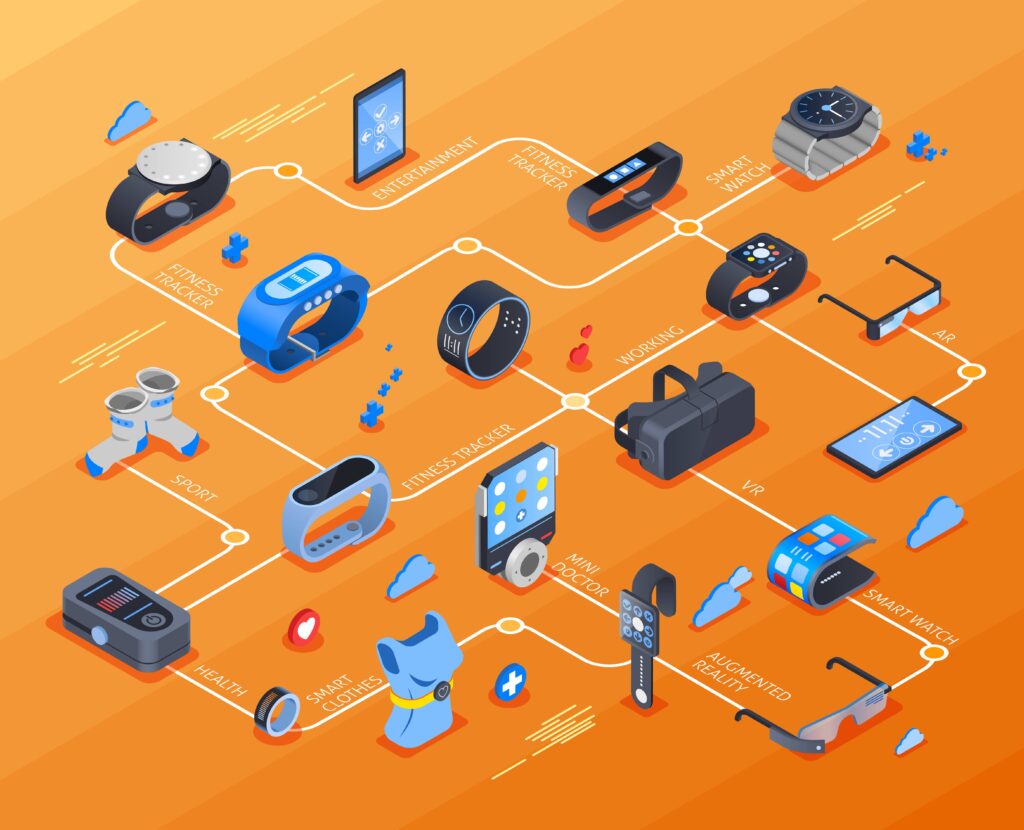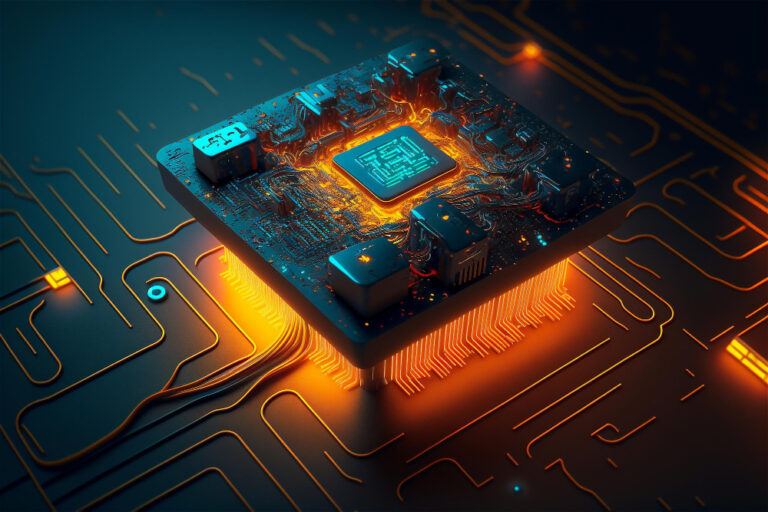The Future on Your Wrist: Exploring Wearable Electronics
Once confined to science fiction, wearable electronics are now a common and revolutionary feature of modern life. These incredible electronics that fit right into clothes and accessories have become more than just fancy toys; they are now essential instruments that track our health, improve our connectivity, and expand our potential. Wearable electronics is a field that combines cutting-edge technology, innovative design, and usefulness that is focused on the needs of people. Products in this category range from smartwatches and fitness trackers to smart clothes and wearable medical devices. Wearable electronics provide an enthralling look into the future of personal technology in this quickly developing industry where style blends with sensors and functionality meets fashion. With the boundaries between the digital and the physical becoming increasingly hazy and our clothes and accessories turning into platforms for technological expression and empowerment, this introduction lays the groundwork for a deeper investigation of the fascinating world of wearable electronics.
What are Wearable Electronics?
Small electronic gadgets that a person wears to offer intelligent assistance are known as wearable electronics. “Wearables” refers to wearable technologies. This group of electronic gadgets can be implanted into the wearer’s body, carried as an accessory, or hidden in clothing. Enhanced with the capability of transmitting and receiving data via the Internet, the gadgets are hands-free and functional microprocessor-powered devices.
The researchers were certain that wearable technology would become popular within ten years by the mid-1990s. Rather, a lot of the ideas that were first created for wearables, including image and positioning, ended up in cell phones. Full-fledged wearable computers are more complex than wearable electronics. Furthermore, a target group’s specialized tasks are the focus of wearable electronics design. A wearable computer, however, can adapt to various jobs and includes input and output. The way they look and the way they are made, both physically and conceptually, distinguish wearable electronics from mobile devices.
Why Wearable Electronics Become Popular?
Wearable electronics have been increasingly popular in recent years and are now a commonplace item in many people’s everyday lives due to several major considerations. Wearable technology was first introduced as a niche market, typically serving niche consumers such as tech enthusiasts or fitness enthusiasts. However technological developments and shifting consumer habits have made them more widely accepted.
The decreasing number of electronic components is one of the main factors contributing to their increasing popularity. With the development of technology, it is now feasible to fit a large number of functions into gadgets that are tiny enough to be worn on the body with comfort. As a result, incredibly useful smartwatches, fitness trackers, and even smart glasses have been developed. These gadgets are now capable of carrying out a wide range of functions that were previously limited to bigger devices like smartphones.
Wearable devices have put a lot of emphasis on fitness and health. Consumers who are concerned about their health have found it appealing that key health indicators like heart rate, steps done, and sleep patterns may be tracked. The need for these devices increased during the COVID-19 epidemic as the value of personal health monitoring became even more apparent.
The wearables’ smooth integration with the Internet of Things (IoT) is another aspect. These days, wearable technology makes it simple to link with other smart devices to form a single network where information is exchanged and utilized for a range of purposes, from home automation to personal wellness.
Wearable electronics have changed in terms of both style and design. Nowadays, designers and manufacturers give aesthetics a lot of weight, producing gadgets that are both practical and stylish. Their appeal has expanded to include a more style-conscious clientele in addition to the tech-savvy community.
And last, the advancement of superior, more effective batteries has been essential. Current developments have made it possible for wearable devices to operate for longer periods between charges, which makes them more suitable for daily usage. Earlier wearables frequently had limited battery lives.
So the rise in popularity of wearable electronics can be attributed to the confluence of improving battery life, IoT integration, health consciousness, and technological improvement. From being futuristic devices, they have evolved into necessary accessories for contemporary living.
Design and Working of Wearable Electronics
Wearable electronics are created using cognitive neuroscience. The scientific discipline of cognitive neuroscience focuses on the brain’s neural connections that are essential to mental functions to better understand the biological mechanisms and components that underpin cognition. When it comes to the process of designing the interfaces for these electronic devices, a neuroscientific approach is taken into account more precisely.
The way individuals engage with novel and unprecedented technologies is closely linked to their cognitive abilities rather than the skill of a designer in developing a user interface. In the event of an unexpected or strange occurrence, people use their cognitive processes as a “fallback” strategy to help them orient. When a person experiences anything novel, be it a device, software, or even an action, new fallback-based behavioral patterns will emerge.
The primary designing process focuses on creating the ideal design for a user by developing mental models to align the user’s intuitive understanding of a product with their interaction with the technology. This involves evaluating and tailoring the design to best suit the user’s perception and usage. The focus of designers will be on how users may effectively accomplish their most important target. When a person interacts with a device, the brain forms three different kinds of images. Each of these image types must be carefully studied and taken care of during the design process to create an interface that is both effective and user-friendly. These consist of mental representations of the past, present, and possibly even future.
When it comes to how wearable electronics operate, they are surrounded by sensors that enable them to keep an eye on a variety of nearby activities. Motion, heart rate, brain activity, and muscular activity can all be monitored by most sensors. They are primarily found in health-related equipment. These can be found in wearable technology such as smartwatches.
The rapid development of sensors and wearable technology at this time has highlighted their important role in the field of Medicine. These gadgets are used to collect data, including heart rate, saturation of blood oxygen, blood pressure, Posture, and exercise with the use of instruments such as an electrocardiogram (ECG), a ballistocardiogram (BCG) and body temperature.
Applications of Wearable Electronics
The way we engage with technology has been completely transformed by wearables, which fit into our everyday routines to improve wellbeing, convenience, and health. Devices like fitness trackers and smartwatches track sleep habits, heart rate, and physical activity to promote a better lifestyle. Wearables have a wide range of medical uses. They can help diagnose diseases early, measure vital signs continually, and track the effectiveness of rehabilitation. With their realistic simulations and immersive learning environments, smart glasses and virtual reality headsets have found applications in training and education.
When it comes to personal convenience, unobtrusive notifications and fitness tracking are combined with fashionable apparel and jewelry. Modern wearables, such as posture correctors and hearing aids, can significantly enhance the quality of life for those with disabilities. These gadgets also gather important data for health research and customized feedback, paving the way for a future in which technology and healthcare will be more inextricably linked. With wearable electronics’ increasing potential and versatility, new and inventive uses across a range of industries are expected. Let us look into a few real-world applications of wearable electronics.
Fitness Trackers
Gadgets like Fitbit, Garmin, and Xiaomi Mi Band track steps, heart rate, sleep patterns, and other fitness metrics. They are commonly worn on the wrist.
Smartwatches
Devices like the Apple Watch and Samsung Galaxy Watch not only track fitness but also offer functionalities like calling, texting, and running apps, acting as an extension of your smartphone.
Smart Glasses
Google Glass and similar products provide augmented reality experiences, displaying information in the user’s field of vision and allowing for hands-free operation.
Health Monitoring Devices
Wearables like the Philips Biosensor BX100 are designed for medical use, monitoring vital signs such as heart rate, respiratory rate, and skin temperature.
Smart Clothing
Clothing embedded with sensors to track various health and fitness metrics. Examples include smart socks that track running technique and smart shirts that monitor heart rate and breathing.
VR Headsets
Devices like the Oculus Rift and HTC Vive provide immersive virtual reality experiences, widely used in gaming, training simulations, and educational content.
Hearing Aids
Modern hearing aids are not just sound amplifiers but are equipped with digital technologies that can be controlled via smartphones for better sound management.
Posture Correctors
Wearables that vibrate or alert the user when they detect poor posture, helping to prevent back problems.
Sleep Trackers
Devices like the Beddit Sleep Monitor and the Philips SmartSleep Analyzer, are used to analyze sleep patterns and improve sleep quality.
Smart Jewelry
Products like the Bellabeat Leaf and Misfit Shine, function as activity trackers but are designed to look like jewelry.
PCBWay in Wearable Electronics
An important player in the wearable electronics market is PCBWay, a well-known supplier of printed circuit board (PCB) production and assembly services. PCBWay’s experience in manufacturing superior, smaller PCBs is becoming more and more important as the market for wearable electronics expands and demands smaller, more dependable, and efficient devices. Their services are designed to meet the specific needs of wearable technology, which include low power consumption, adaptability, and durability.
PCBWay facilitates the production of a broad range of wearable devices, from fitness trackers and smartwatches to sophisticated medical monitoring systems, by providing customizable PCB solutions, including rigid-flex and flexible boards. They guarantee that entrepreneurs and wearable technology companies can effectively iterate and develop their ideas by supporting both large-scale production and small-scale prototypes. PCBWay is a prominent player in the rapidly changing world of wearable electronics, making substantial contributions to the sector’s growth through its dedication to quality and ability to stay up to date with emerging technologies.
PCBWay’s Wearable Electronics Community
Beyond manufacturing, PCBWay is involved in the wearable electronics industry by supporting a thriving community that is committed to this cutting-edge industry. This group of engineers, designers, hobbyists, and tech enthusiasts thrives on sharing knowledge, working together, and exchanging ideas. Members of PCBWay can display their wearable electronics projects on this platform, which includes everything from complex medical monitoring systems to do-it-yourself fitness trackers.
As members of the community share their experiences with PCB design issues, material selection, and the integration of advanced functionality into wearable devices, this involvement plays a critical role in fostering innovation. Through the provision of tools, project sponsorship, and conversation and webinar facilitation on the newest trends and best practices in wearable technology, PCBWay actively promotes this ecosystem. By encouraging a collaborative and encouraging atmosphere for creators and inventors, this community-centric strategy not only solidifies PCBWay’s position in the wearable electronics market but also speeds up the creation of new, cutting-edge wearable technologies.
PCBWay Christmas Big Sale
You may celebrate the joy of the holidays and give your electronics projects a festive touch with PCBWay’s Christmas special deals and games. PCBWay is currently offering exclusive deals and discounts on its premium printed circuit boards (PCBs) and assembly services in time for the holiday season. Celebrate this Christmas with PCBWay!
Conclusion
To sum up, wearable electronics mark a major advancement in the merging of technology and daily life. These gadgets—which range from fitness trackers to complex health monitoring systems—are essential tools that improve productivity, lifestyle, and personal health. Their quick development is indicative of a broader movement toward more participatory, individualized technology. With previously unheard-of levels of capability and ease, these gadgets promise to further blur the boundaries between technology and the human experience as they develop. The continued progress in this area has enormous potential to transform healthcare and accessibility for individuals with disabilities, in addition to personal fitness and fashion. Therefore, wearable electronics are at the front of a technological revolution that is changing how we interact with the digital world and paving the way for a future that is more integrated, health-conscious, and effective.














